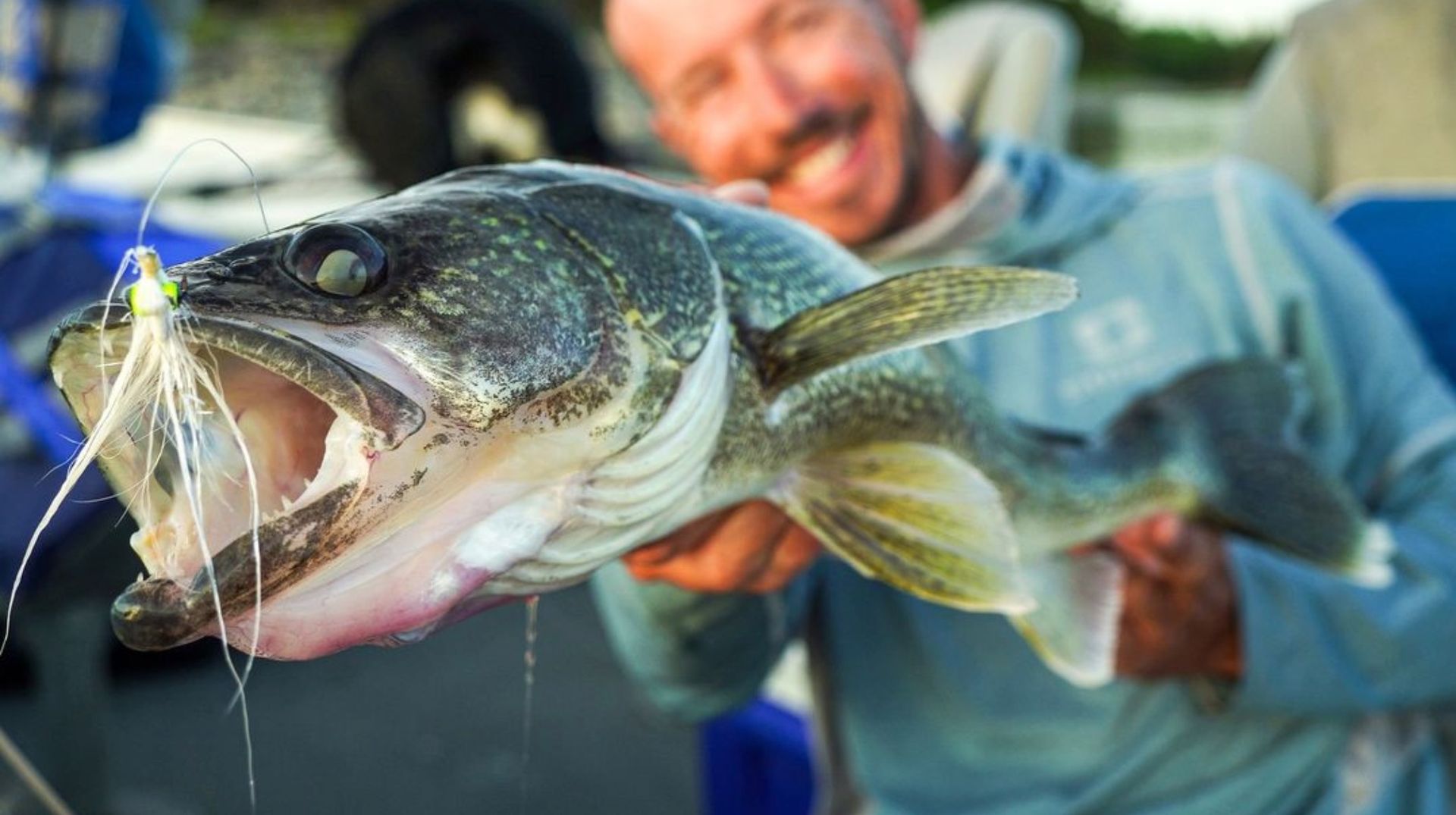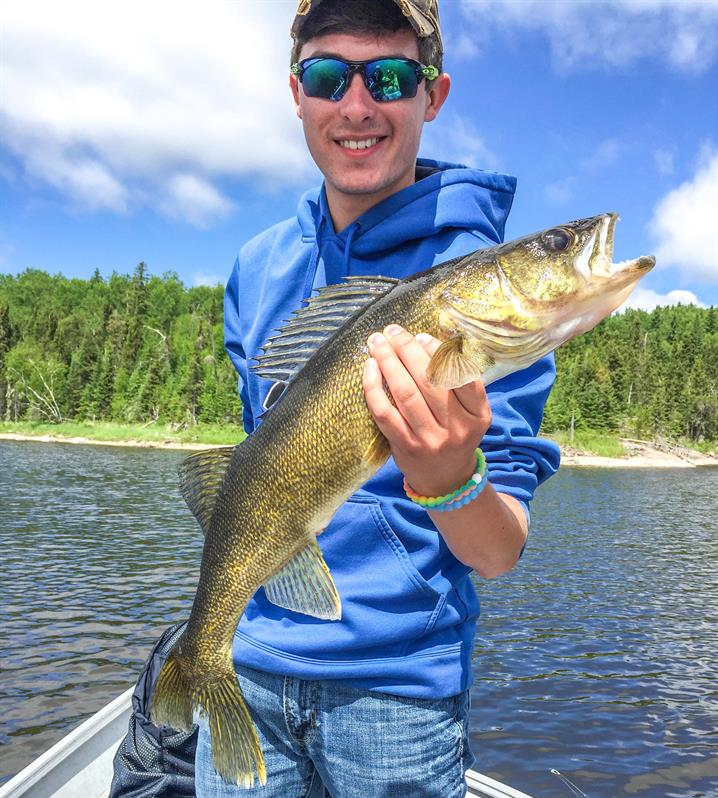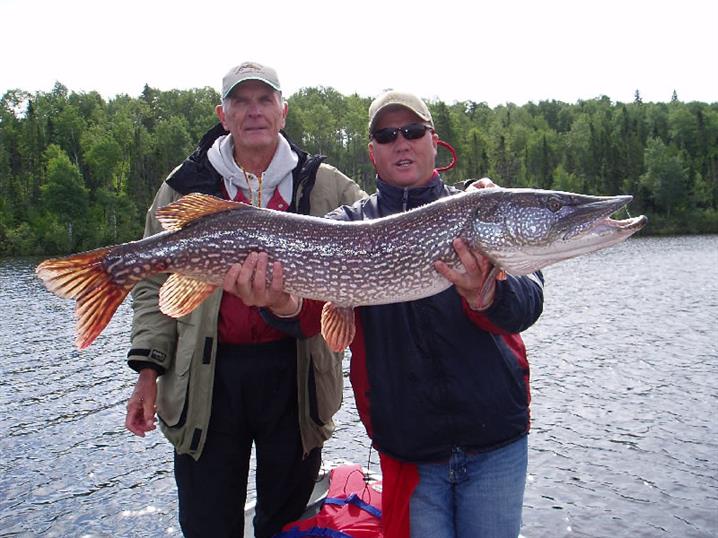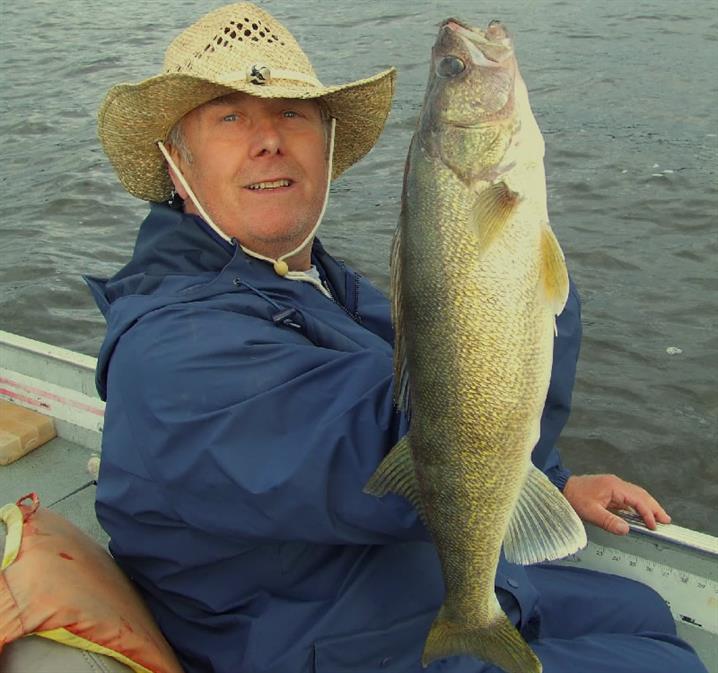Walleye Fishing in Canada: Most Important Facts and Information
Tip: Do you want to see the largest walleye caught at Oak Lake Lodge? If yes, scroll to the end of this article.
Walleye fishing is a popular activity among anglers from Canada and the USA. The species is highly sought after due to its excellent taste and fighting ability. Additionally, walleye can be found in many different bodies of water throughout Canada, making it accessible for locals and tourists. This article will explore some essential facts and information about walleye fishing in Canada.
Whether you are a seasoned angler or a beginner looking to try your luck, this guide will provide valuable insights on how to catch these elusive fish.
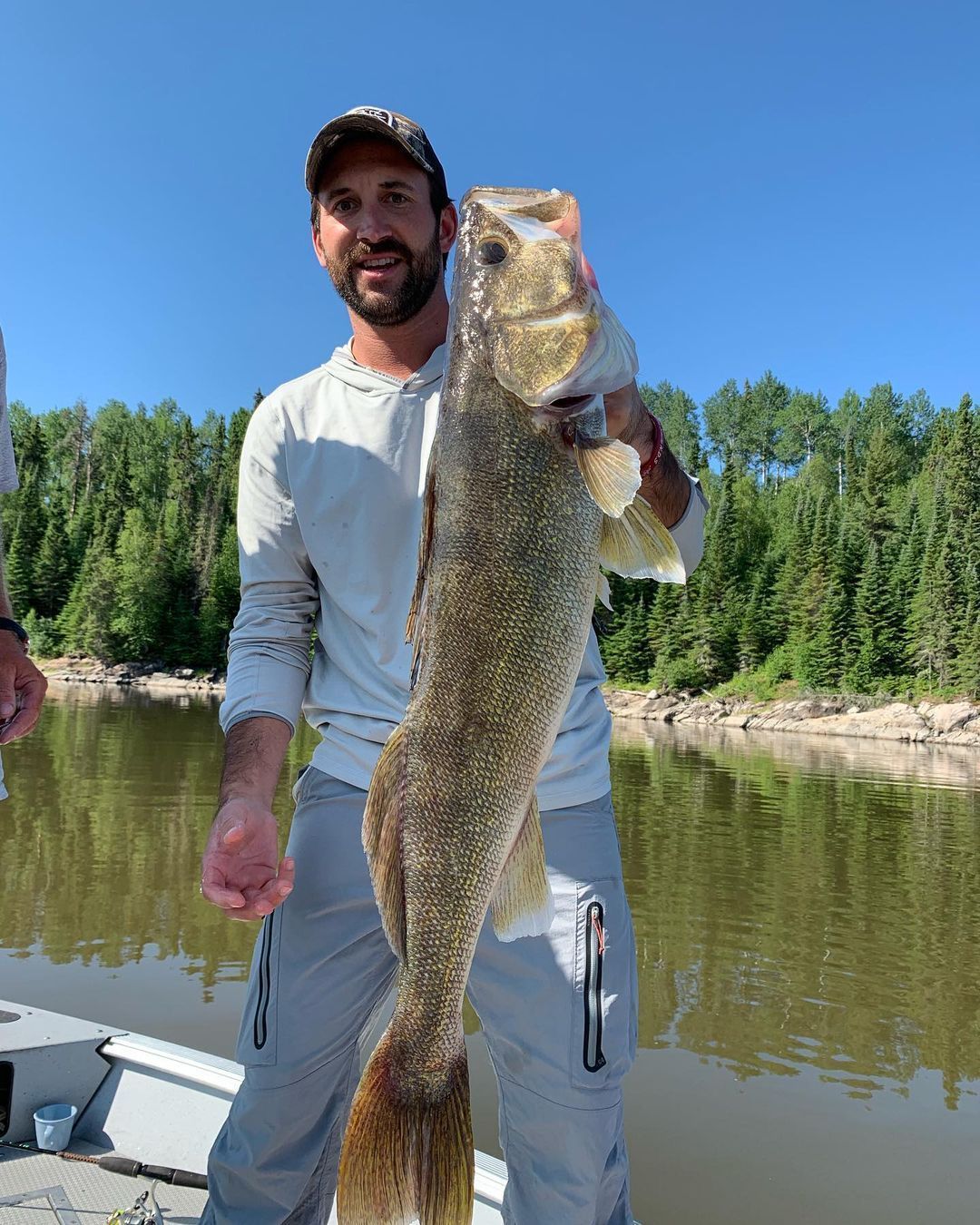
Introduction to Walleye Fishing in Canada
If you plan a fishing trip to Canada, walleye fishing should definitely be on your list. Walleye is one of Canada's most popular game fish, and it can be found in many lakes and rivers across the country.
However, if you want to make the most of your walleye fishing experience, there are some important facts and information that you need to know.
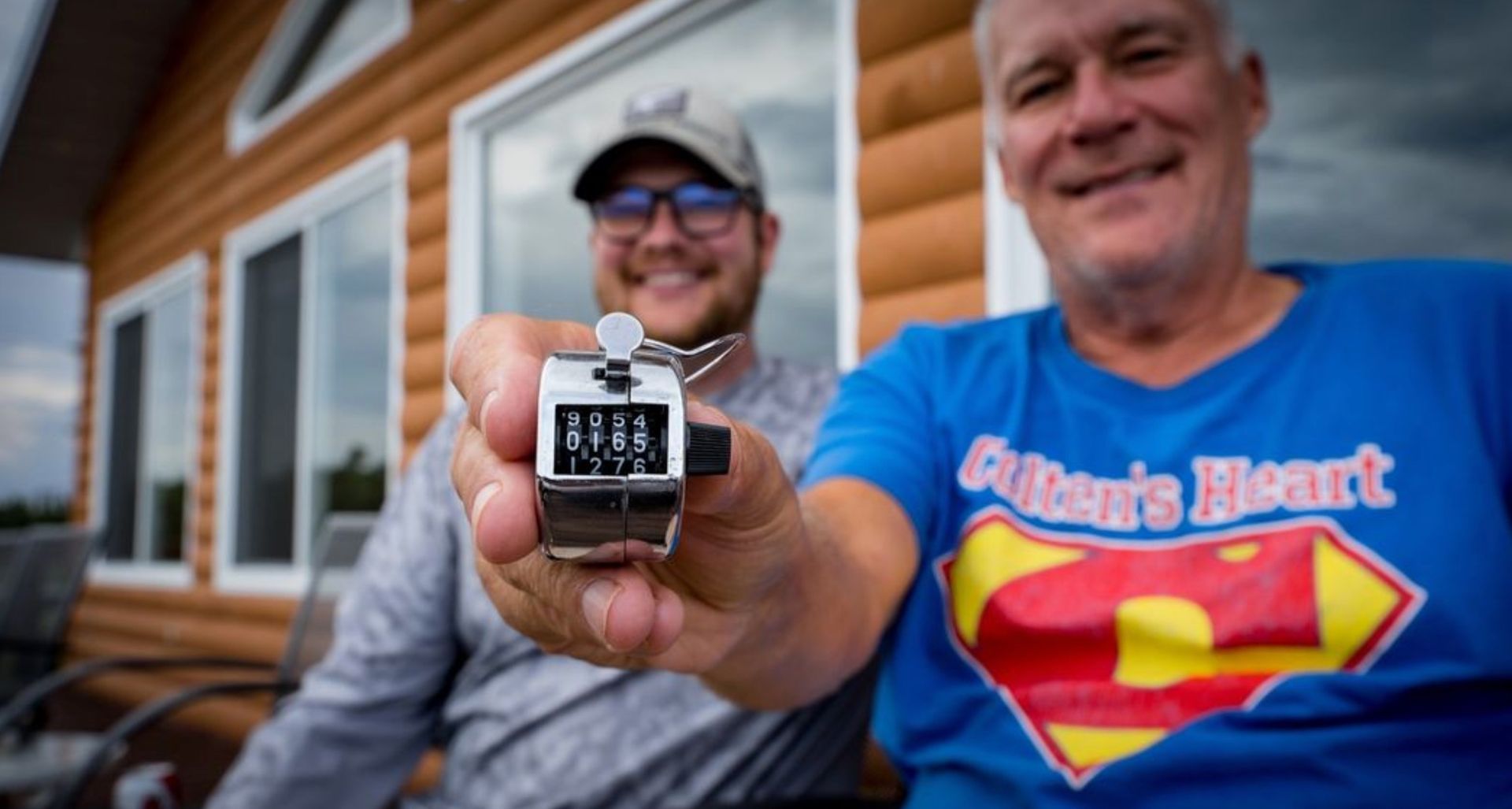
Firstly, learning the walleye's key characteristics and general habitat gives clues as to where to fish for them.
Secondly, knowing the best locations for walleye fishing in Canada can significantly increase your chances of catching this popular game fish. Some top spots include Lake Winnipeg, Lake of the Woods, Saskatchewan River, Georgian Bay, Great Slave Lake, and Oak Lake, part of the remote and pristine English River System.
Thirdly, it is crucial to use the proper fishing techniques for walleye. Trolling, jigging, live bait fishing, and casting are all effective methods for catching this species.
Finally, it is important to know the regulations and limits for walleye fishing in Canada, as they vary from province to province.
By following these tips and researching beforehand, you can have a successful and enjoyable walleye fishing experience in Canada.
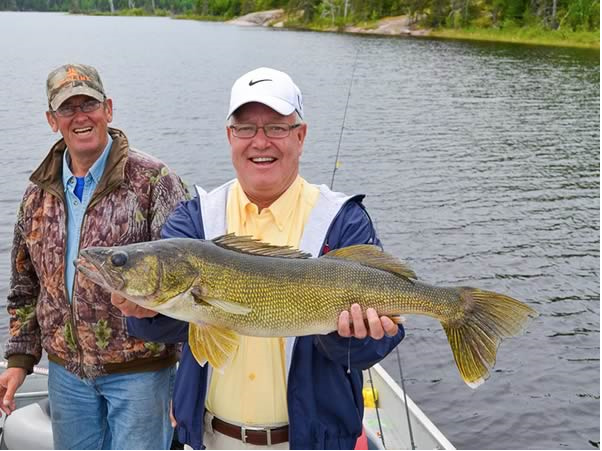
Characteristics and Habitat of Walleye
The walleye, also known as the yellow pike or pickerel, is a freshwater fish that can be found in lakes, rivers, streams and ponds across North America.
Walleye typically grow up to 25-30 inches in length and weigh between 6-10 pounds. They are usually olive green or yellowish brown in color with flecks of gold on the sides and white tips on their fins.
Walleyes also have white bellies and distinctive large eyes that glow in the dark. They can grow up to 30 inches in length and weigh as much as 20 pounds, although the average size is around 2-3 pounds.
These fish prefer cool, clear waters and can be found in many different bodies of water throughout Canada, including lakes, rivers, and reservoirs.
They are often found near structures such as weed beds, rocks, and drop-offs. Walleye can tolerate a wide range of water temperatures but are most active in the spring and fall when the water is cooler.
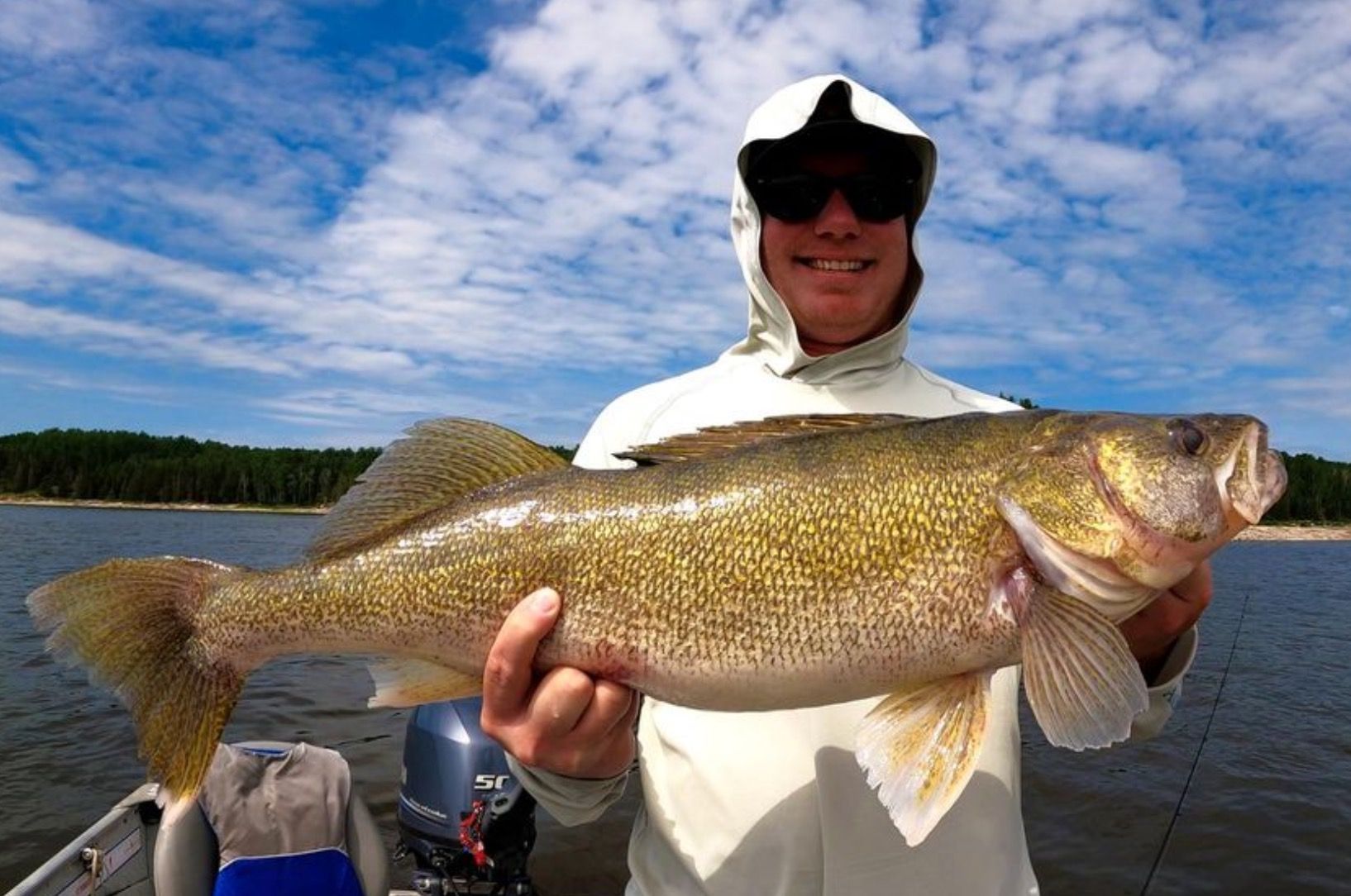
Fishing Techniques for Catching Walleye in Canada
Several popular techniques for catching walleye in Canada include trolling, jigging, and live bait fishing.
Trolling involves moving a boat slowly through the water while dragging lures or bait behind it. Jigging involves dropping a weighted lure or jig to the bottom of the water and bouncing it up and down to attract fish. Live bait fishing involves using live minnows or worms to entice walleye to bite.
It is important to use the right equipment when fishing for walleye, including rods, reels, and lines that are appropriate for the size of fish you are targeting. Additionally, using a fish finder can be helpful in locating schools of walleye and determining their depth.

Walleye fishing in Canada requires specific techniques to increase the chances of catching this elusive fish. The following are some popular techniques used by anglers:
1. Trolling: This technique involves using a boat to move slowly through the water while dragging lures or bait behind it. Anglers can use deep-diving crankbaits or spinner rigs with live bait to entice walleye.
2. Jigging: Jigging involves dropping a weighted lure or jig to the bottom of the water and bouncing it up and down to attract fish. Anglers can use vertical jigs, swimming jigs, or hair jigs to catch walleye.
3. Live Bait Fishing: Using live minnows, worms, or leeches can be especially effective when targeting walleye. Anglers can use a slip-bobber rig, where the bait is suspended at a certain depth or bottom-bouncing rigs that allow the bait to bounce along the bottom.
4. Casting: When fishing in shallower waters or near weed beds, casting with crankbaits or jigs can be effective.
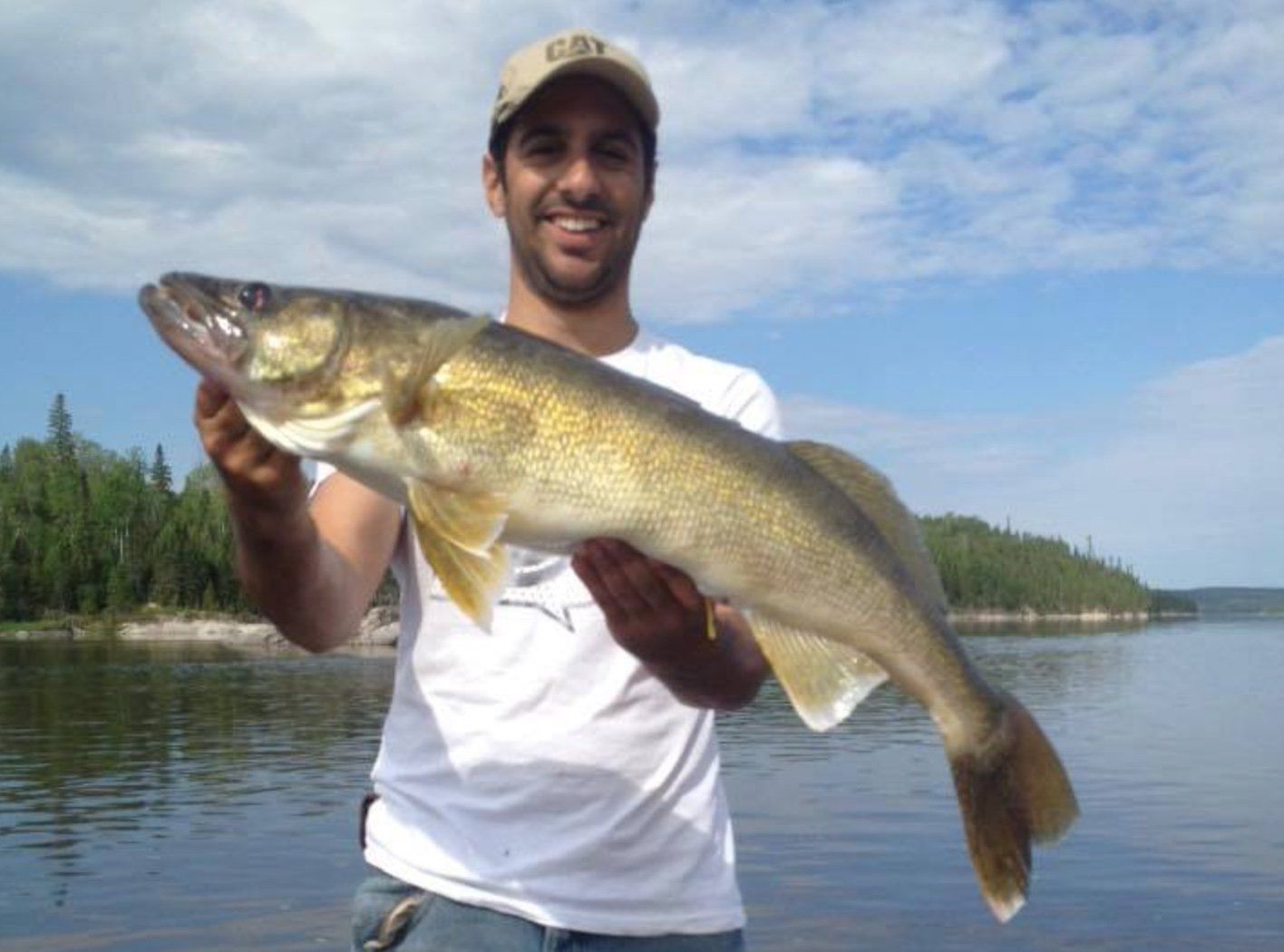
5 Best Places to Fish for Walleye in Canada
Canada has many great walleye fishing locations, each with unique features and challenges. Here are some of the top spots to consider:
1. Lake Winnipeg: This massive lake in Manitoba is famous for its trophy-sized walleye, with fish weighing over 10 pounds not uncommon.
2. Lake of the Woods: Located on the border between Ontario and Manitoba, this lake is known for its abundance of walleye and offers a variety of fishing opportunities, including trolling and jigging.
3. Saskatchewan River: This river system in Saskatchewan is known for producing large walleye, with fish over 30 inches not uncommon.
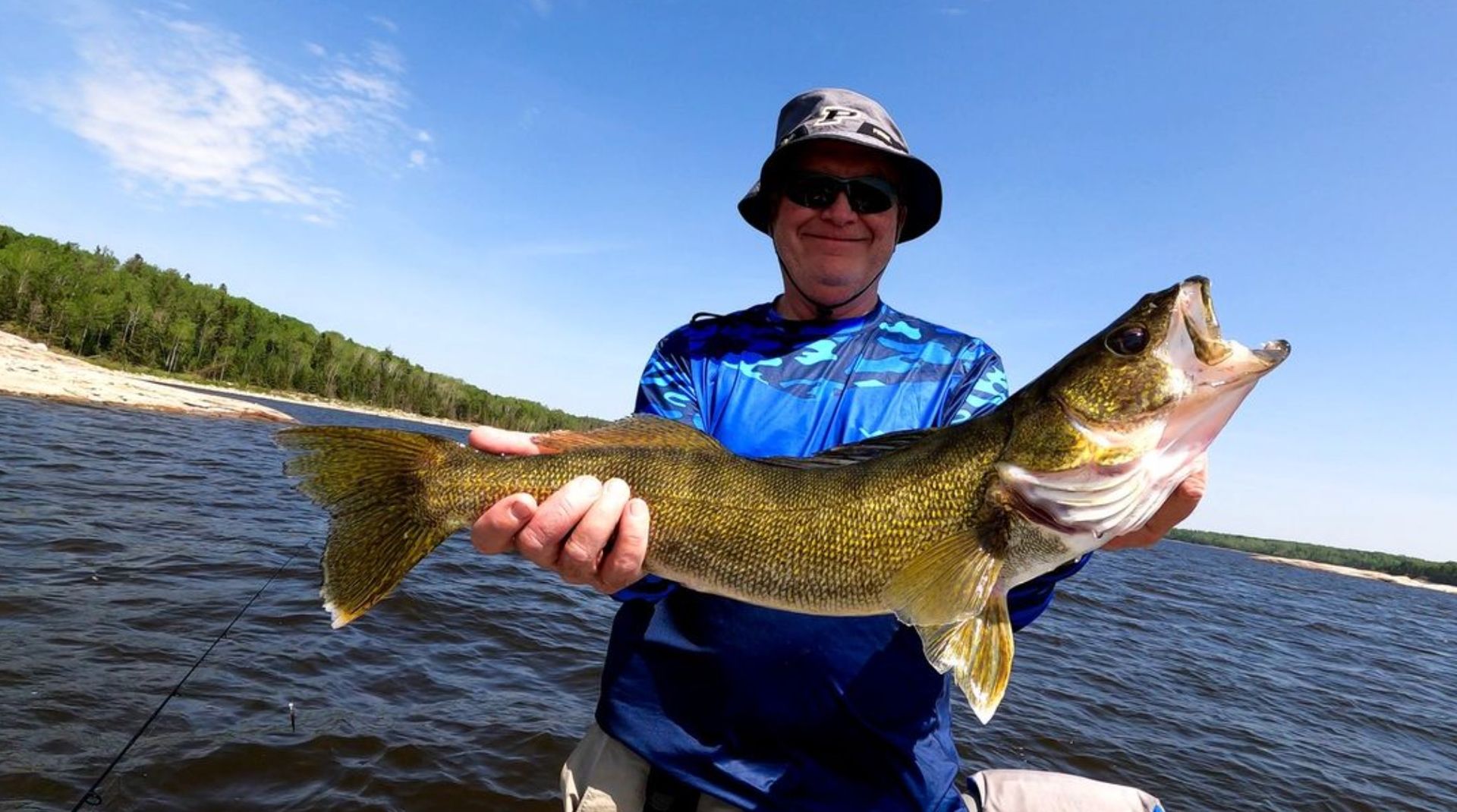
4. Georgian Bay: This body of water in Ontario offers great walleye fishing opportunities, as well as beautiful scenery and a variety of other fish species to target.
5.Oak Lake on the English River System in Northwestern Ontario offers anglers excellent walleye fishing opportunities. The Oak Lake Lodge has access to over 70 miles of pristine waters, with experienced guides available to help visitors navigate the area and catch walleye. The English River System is known for producing large walleye, with fish weighing up to 10 pounds not uncommon.
Our record-breaking catch was 22.3 pound walleye in 2012 — the picture is at the end of this article.
Additionally, the lodge offers comfortable accommodations and amenities for a relaxing and enjoyable fishing trip.
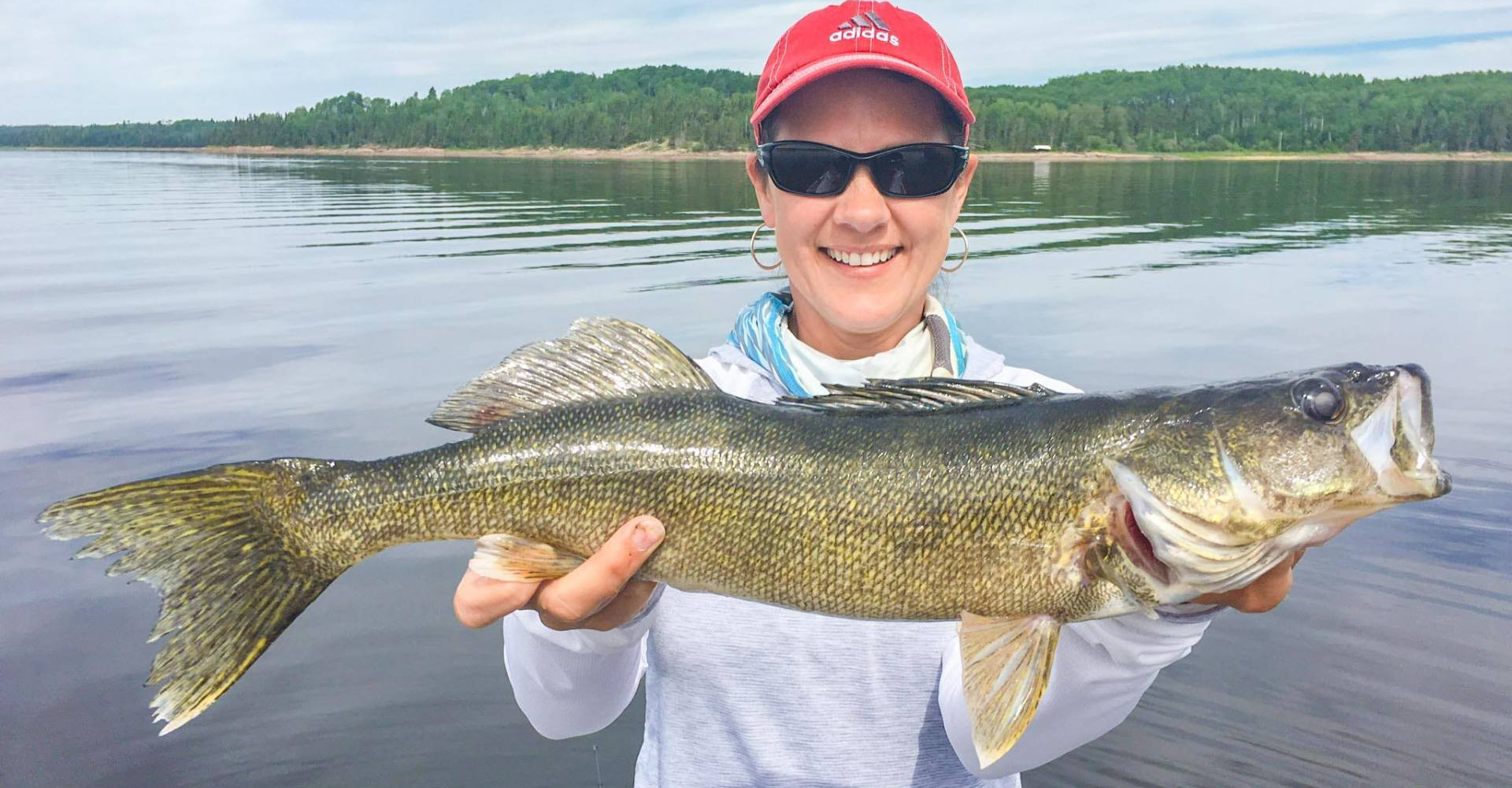
Best Time and Locations for Walleye Fishing in Canada
The best time to go walleye fishing in Canada is during the spring and fall seasons. During these times, the water temperature is cooler, and the fish are more active, making them easier to catch.
Walleye fishing in Canada is an exciting and rewarding experience for anglers of all skill levels. By understanding the best times and locations to go, as well as the correct techniques and equipment to use, anglers can maximize their chances of success on their next fishing trip.
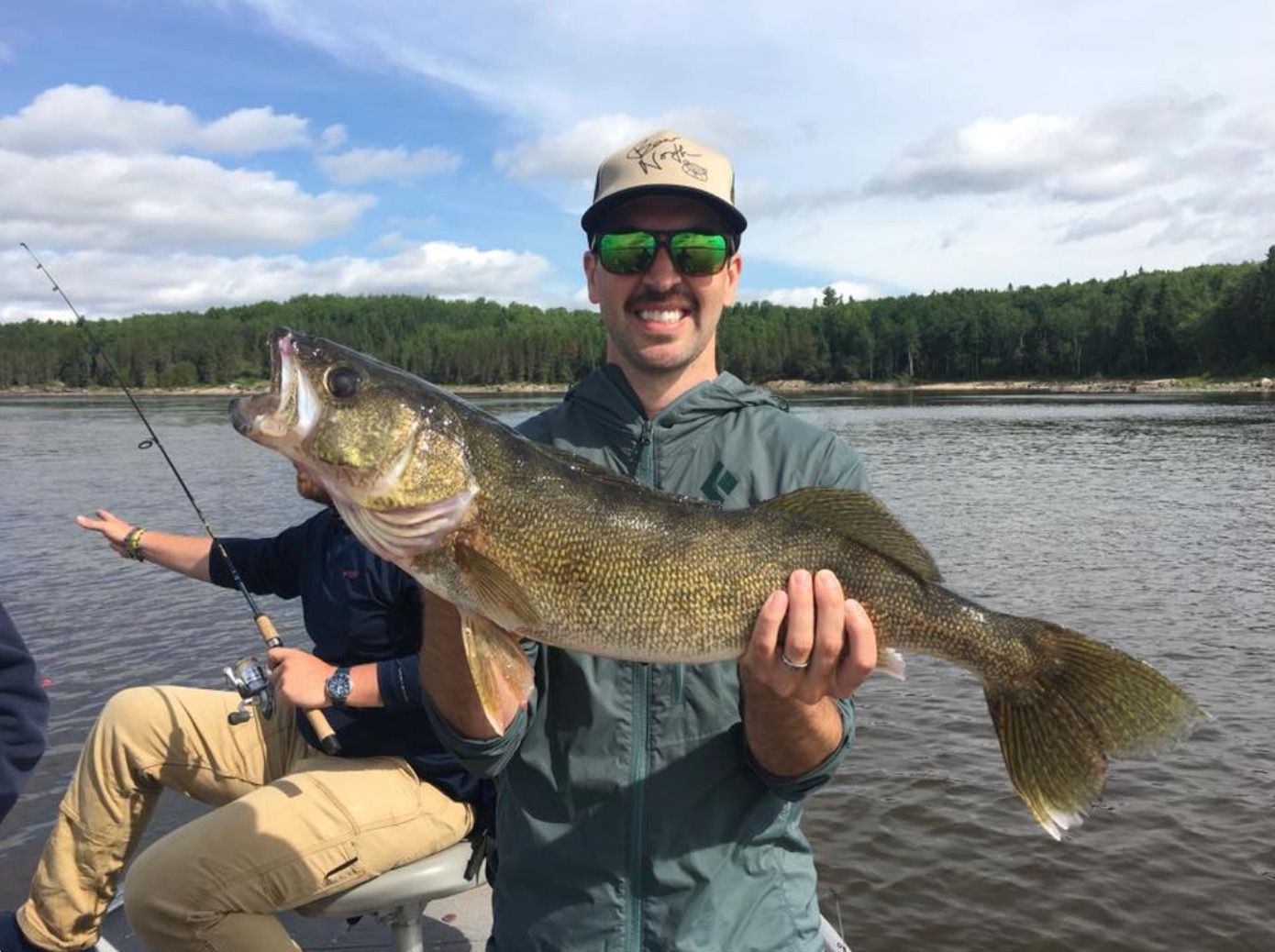
General Tips for Finding Walleye
Finding walleye can be a challenging task for anglers, but with the right techniques and knowledge, it can be a rewarding experience. Here are some tips on how to find walleye fish in Canadian lakes:
1. Look for structure: Walleye fish prefer to stay close to structures like weed beds, drop- offs, and rock piles. These structures provide cover and shade for the fish and attract prey.
2. Use depth finders: A good depth finder can help you locate schools of walleye fish quickly. Look for areas where the water depth changes abruptly.
3. Fish during low light conditions: Walleye fish are most active during dawn and dusk when light levels are low. Try to plan your fishing trip around these times for better chances of catching walleye.
4. Use live bait: Walleye fish prefer live bait like minnows or nightcrawlers over artificial lures. Using live bait can increase your chances of getting a bite.
5. Experiment with different lure colors: Walleye fish can be picky about the color of their food. Try using different colored lures to see which one works best in the particular lake you're fishing in.
6. Pay attention to water temperature: Walleye tend to move into deeper waters during the summer months when water temperatures are higher. During the fall and winter, they stay in shallower waters.
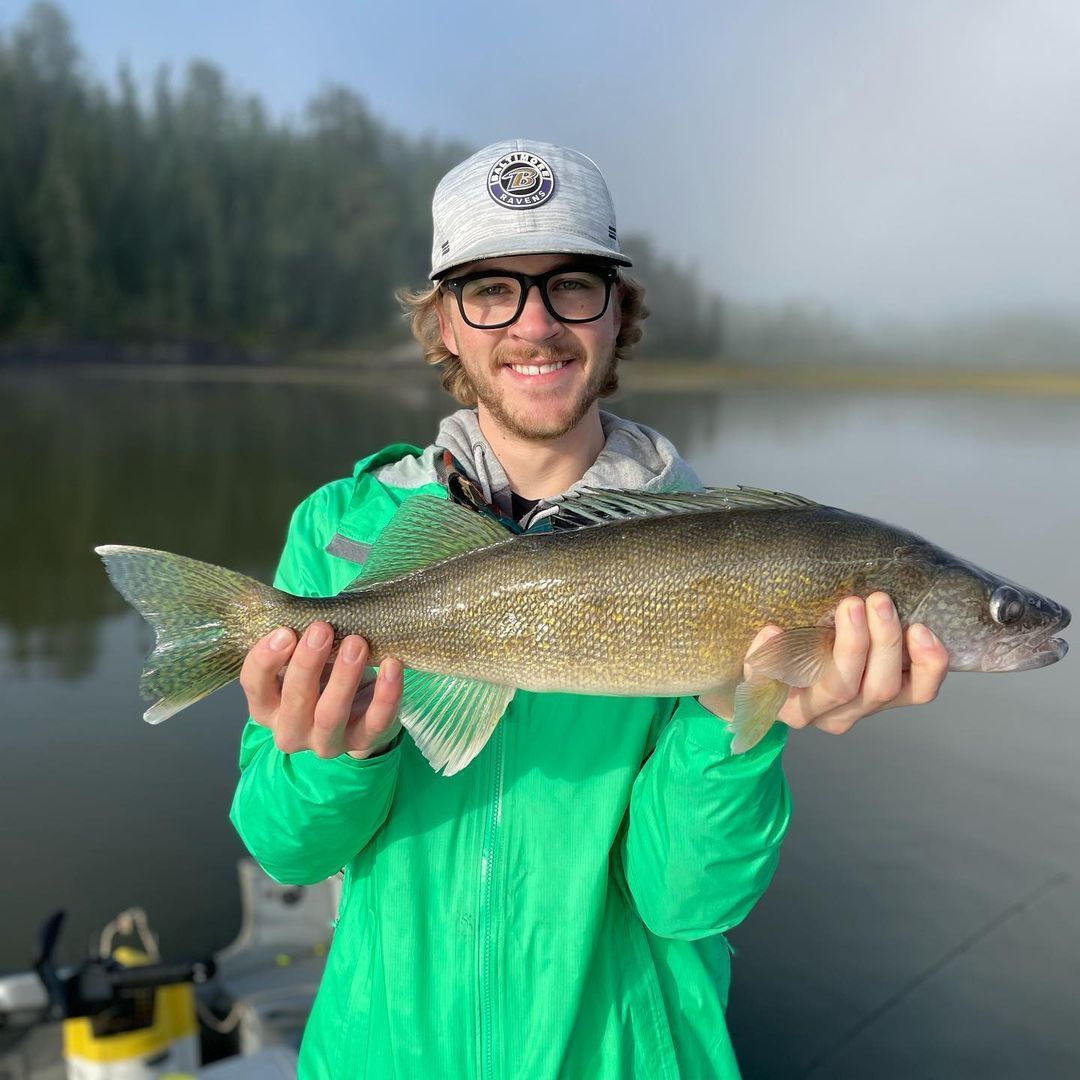
Next, we will look at fishing for walleye during the spring, summer, and fall.
Please note:
When flying to a remote lake like Oak Lake, you don't have to worry about what seasons are best for fishing for walleye. Oak Lake Lodge is the only lodge on the lake, and the fishing is superb. The lake waters are protected since it is part of a provincial waterway, and there is plenty of large walleye fish to catch regardless of the season. The English River System's habitat is as natural and healthy as can be because the waters are so remote and away from civilization.
Do you want to see the record breaking walleye caught at Oak Lake Lodge in 2012? Scroll to the end of this article to see all 22.3 pounds of it.
Tips for Walleye Fishing in the Spring:
In the spring, walleye can be found in shallow waters (under 15 feet). They are typically near weed beds, drop-offs, and rock piles where they can find cover and shade. Walleye also tend to be more active during dawn and dusk when light levels are low, so these times may be optimal for fishing.
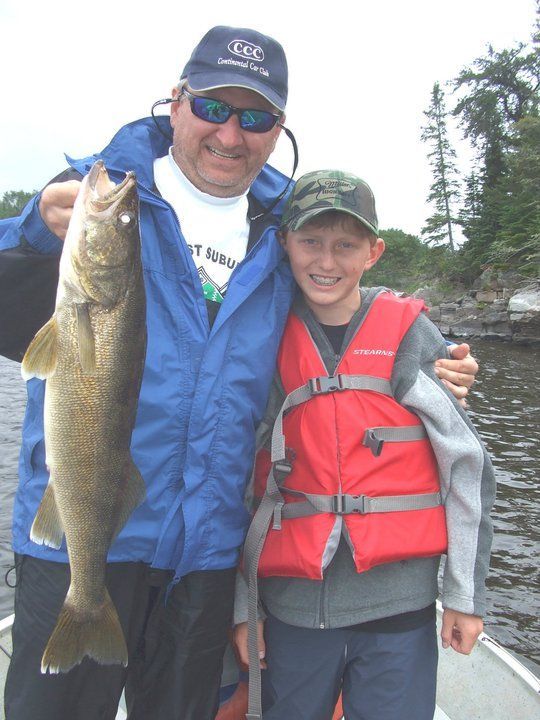
1. Prepare your tackle: As you prepare to go fishing, make sure you have the right tackle and equipment for walleye fishing. This includes a medium-powered spinning rod, a reel spooled with 10-pound test line, and a selection of jigs, crankbaits, and live baits such as minnows or worms.
2. Locate areas of activity: Look for areas where walleye are likely to be active such as near weed beds or drop offs. These areas can provide cover for the fish and attract them to feed on baitfish in the area.
3. Use deep-diving crankbaits: When trolling during the spring season, use deep-diving crankbaits to get down into deeper water where walleye tend to lurk. These lures can mimic baitfish in the area and entice walleye to strike.
4. Jigging: Jigging is another effective technique for catching walleye in the springtime. Anglers can use vertical jigs, swimming jigs, or hair jigs depending on their preference and the depth they are fishing in.
5. Live Bait: Live bait is a great way to catch walleye in Canada. Consider using minnows, worms, or leeches while trolling or jigging.
Oak Lake Lodge has fresh bait flown in every day for our guests.
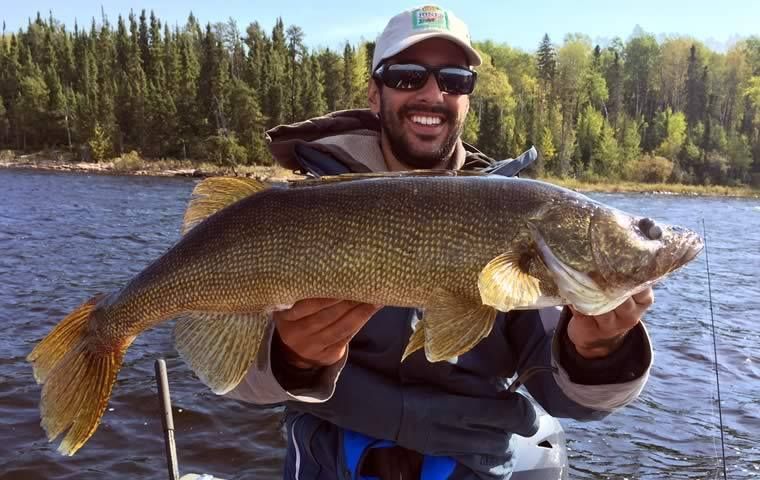
Tip for Walleye Fishing in the Summer:
What depth of water will walleye lurk in during the summer?
Walleye prefer cooler water temperatures, typically in the range of 45-75°F. In the summer, walleye tend to move into deeper waters where the water is cooler. The depth of these waters can vary depending on the particular body of water, but generally, walleye swim at depths ranging from 15-50 feet.

What time of day is best for catching walleye in the summer?
The best time of day for catching walleye in the summer is typically in the early morning or late evening when the water is cooler, and the fish are more active.
1. Locate Areas of Activity: During the summer months, walleye are often found in shallow waters near weed beds and other areas with structures such as rocks or sunken logs. Look for these areas to locate active fish.
2. Use Live Bait: Live bait such as minnows, worms, or leeches can be a great way to attract walleye when fishing during the summer season. Consider rigging these baits on a jighead or simply free-lining them into the water.
3. Try Topwater Lures: Topwater lures such as poppers and buzzbaits can effectively catch walleye during the summer months. Cast these lures over shallow weed beds and wait for a strike as they are reeled back in.
4. Try Crankbaits: Crankbaits are another great option for catching walleye during the summer season. Rig crankbaits on medium-power spinning rods and cast them around weed beds, rocks, and other areas of structure where walleye may congregate.
5. Pay Attention to Water Temperature: As the water temperature rises in the summer, walleye tend to move into deeper water. Consider using slow-rolling crankbaits and jigs to target these fish in the depths.
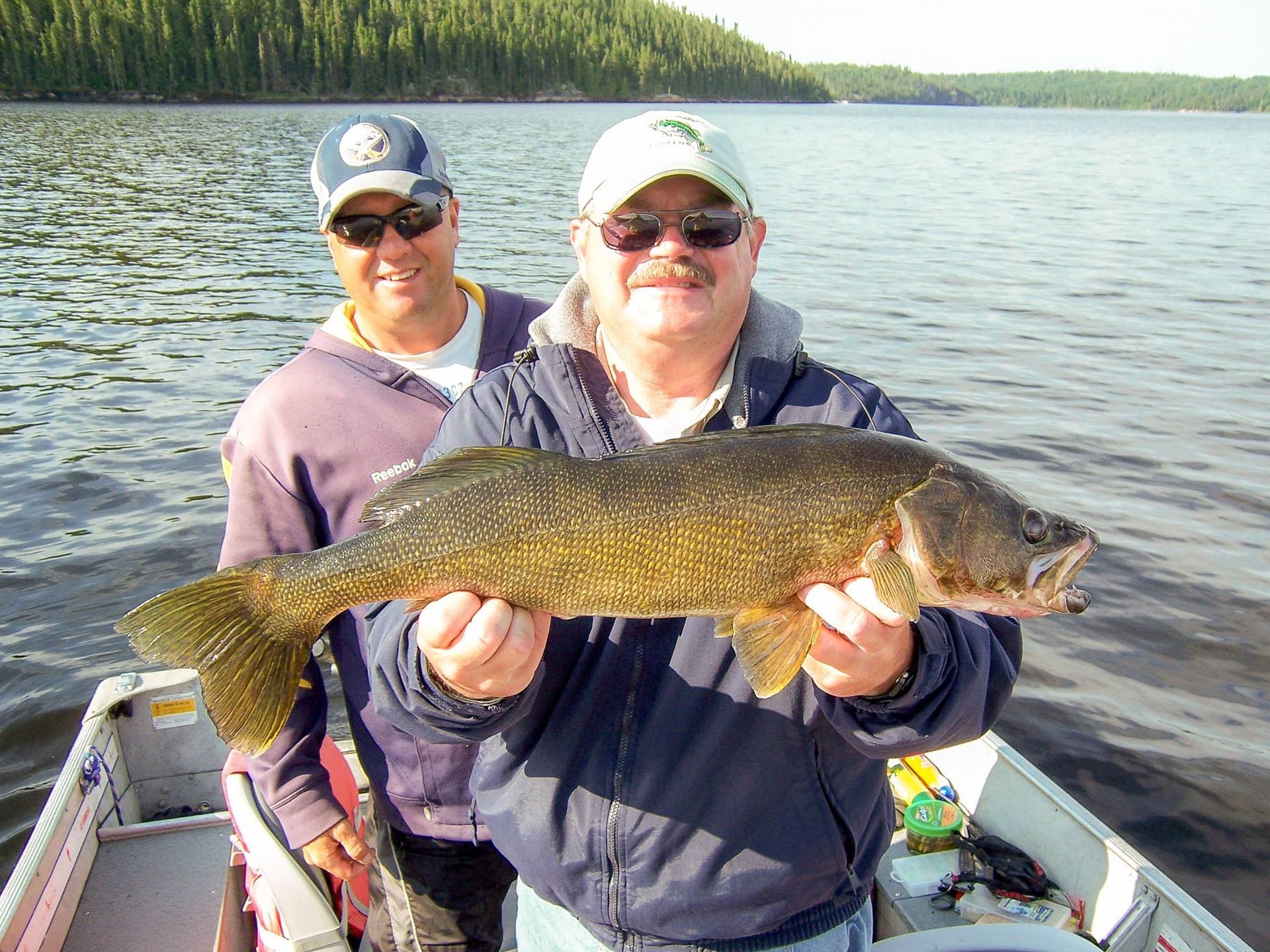
What water temperature is best for walleye fishing in the fall?
Walleye prefer cooler water temperatures, typically in the range of 45-75°F. In the fall months, walleye tend to move into shallower waters as the water cools down. The ideal temperature for walleye fishing in the fall is usually between 55-65°F.
What techniques should be used when fishing for walleye in the fall?
When fishing for walleye in the fall, anglers should focus on areas with structure such as weed beds or rocky points. Jigging is a popular technique during this time of year, and anglers can use vertical jigs, swimming jigs, or hair jigs depending on their preference and the depth they are fishing in.
Live bait such as minnows or leeches can also be effective when targeting walleye during this season. Crankbaits and topwater lures can also be productive when shed over shallow weed beds and other areas of structure where walleye may congregate.
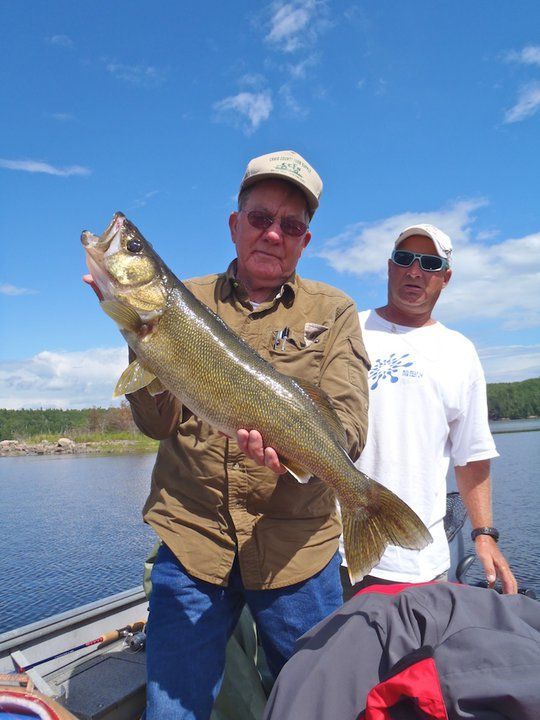
In the fall season, walleye can be found in deeper waters as they move into cooler temperatures to spawn. During this time, anglers should target areas of structure such as rocks, reefs, or sunken logs and use crankbaits or jigs to catch walleye.
The walleye usually remain in shallow waters (under 15 feet) to feed and can do so the entire day. Spring is, therefore, ideal for walleye fishing although winter is the best period since this is when you can catch the largest walleye.
You can also consider fishing very early in the morning or late in the evening since walleyes move to shallow areas to feed during these times.
By understanding the best times, locations, and techniques for walleye fishing in Canada, anglers can maximize their chances of success on their next fishing trip. With a bit of preparation and knowledge, any angler can have a successful and rewarding experience.
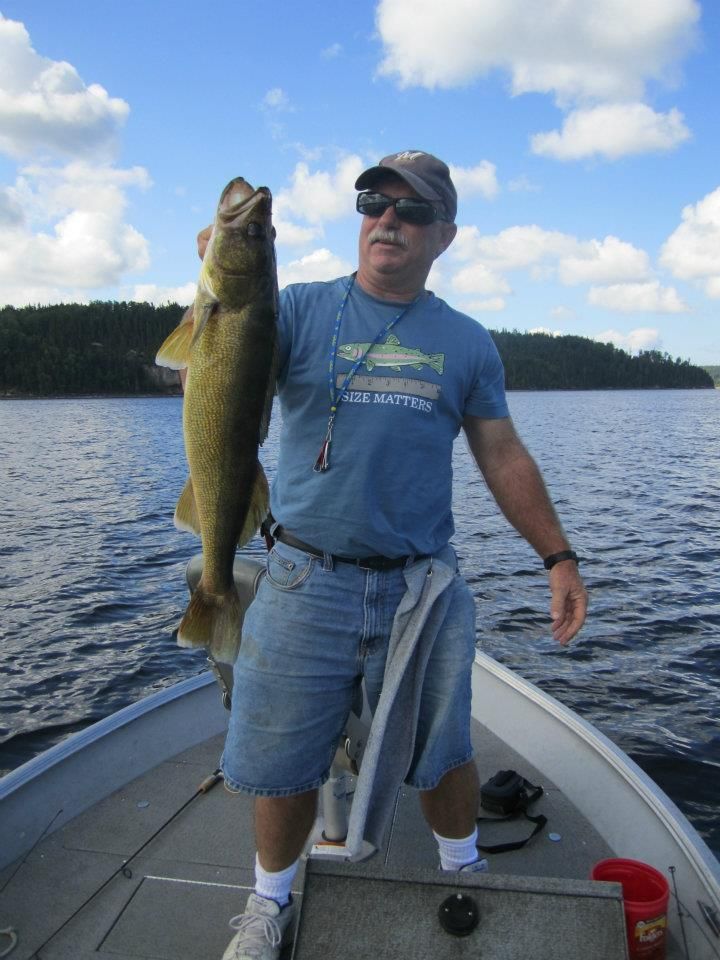
Regulations and Limits for Walleye Fishing in Canada
Anglers must be aware of the regulations and limits for walleye fishing in Canada. These can vary depending on the province or territory and the specfiic body of water being shed.
Most provinces generally have a daily catch limit of 2-6 walleye per angler, with size restrictions ranging from 12-18 inches. Catch and release practices are also encouraged to preserve the walleye population in Canadian waters.
It is important to obtain the necessary fishing licenses and permits before heading out on a fishing trip, as well as follow all rules and regulations set by the provincial or territorial government.
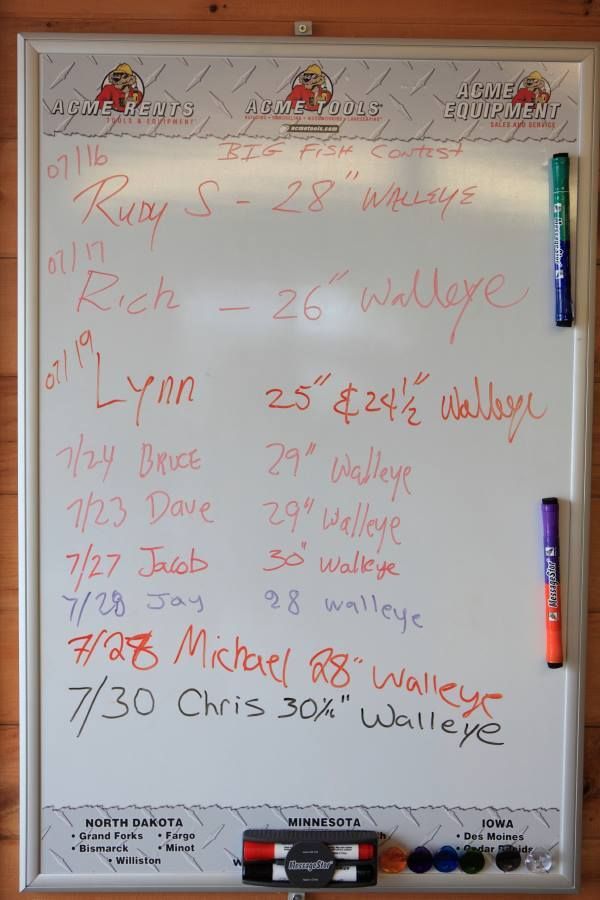
An aside: Oak Lake Lodge & Outpost sells fishing licenses for guests who haven't already purchased one.
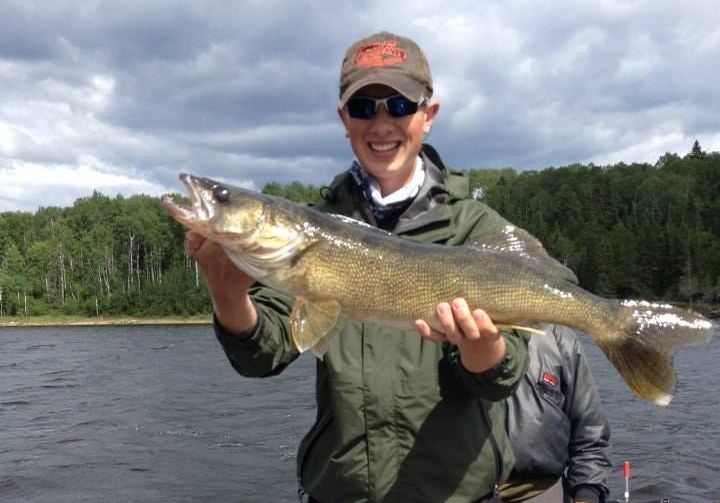
1. Catch limits: Anglers should be aware of their province or territory’s regulations regarding walleye catch limits. Different regulations may be based on size, number, season, or location.
2. Releasing fish: If an angler catches a walleye that is too small to keep, they should practice catch and release. This means they must unhook the fish gently and return it back into the water as quickly as possible to reduce stress levels on the fish and increase its chance of survival.
3. Use barbless hooks: Barbless hooks are easier to remove from a fish’s mouth since they don’t have barbs that can get stuck in its skin. This reduces injury and mortality rates among released fish.
4. Use artificial bait: When using artificial bait such as jigs or crank baits, ensure they are free from lead, which can be toxic to fish.
5. Clean up: Before leaving the fishing spot, make sure all hooks and bait pieces are disposed of properly in the trash or recycling bins provided.
Walleye fishing is a rewarding experience for any angler that is willing to take the time to learn about this species and prepare appropriately for their next outing. With the proper knowledge and techniques, anglers can maximize their chances of success and have a successful fishing trip.
Summary
Why is Oak Lake Lodge & Outpost such a popular fly-in fishing location in Canada?
Oak Lake Lodge & Outpost is a great fishing spot because it is situated in one of Ontario's most picturesque and remote areas, offering anglers an incredible variety of fish species to target. Even though we are remote, it is only a thirty minute float plane from Vermilion Bay, Ontario to our lodge.
Our lake has many rocky shoals, weed beds, and other structures that serve as excellent habitat for walleye and other gamefish.
Additionally, Oak Lake Lodge & Outpost offers experienced guides who can provide advice on the best techniques for catching walleye, such as jigging or using topwater lures. To top it all off, Oak Lake Lodge & Outpost guests can purchase their fishing licenses directly at the lodge for added convenience.
Record Walleye Catch at Oak Lake Lodge
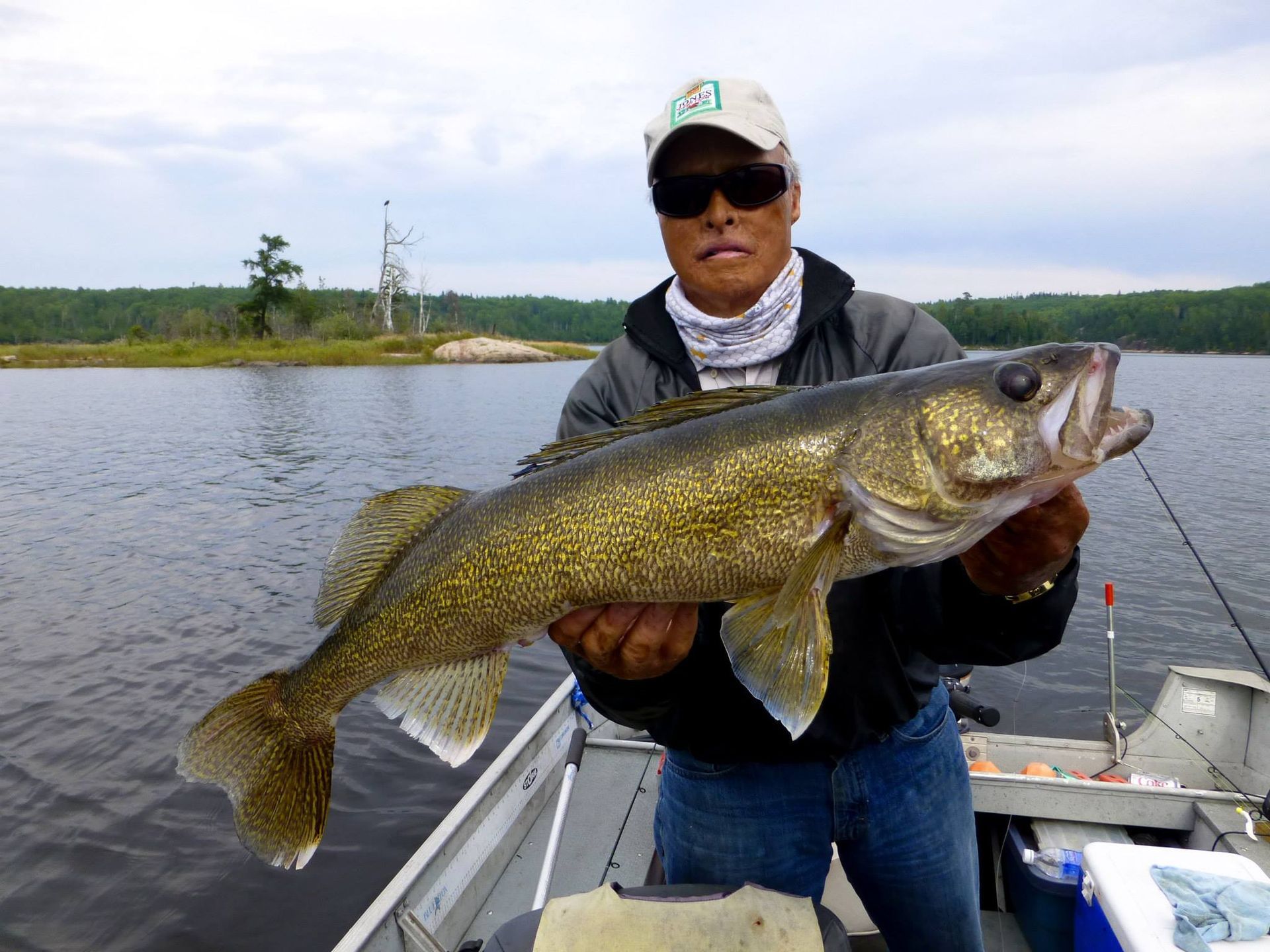
Summary
Walleye fishing in Canada is a rewarding experience for anglers, especially when you visit remote locations that weekend fishermen cannot drive to. When fishing for walleye, anglers should focus on areas with structures such as weed beds or rocky points. Jigging and using artificial bait, such as crankbaits, topwater lures, and live bait, can effectively target walleye during the fall season. Additionally, it is important to practice catch and release, use barbless hooks, use artificial bait free from lead toxicity, and clean up before leaving the fishing spot.
Fishing in Canada
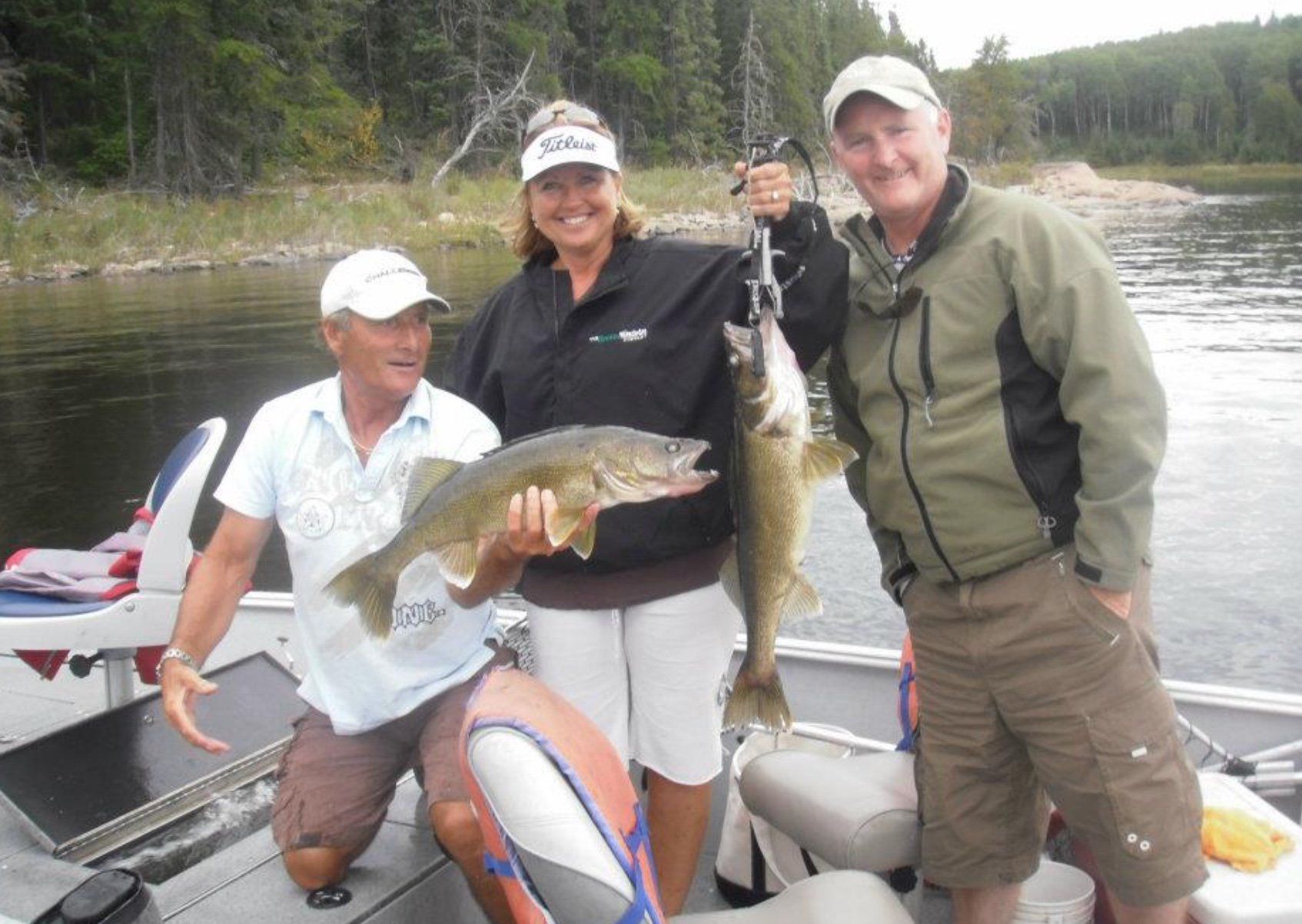
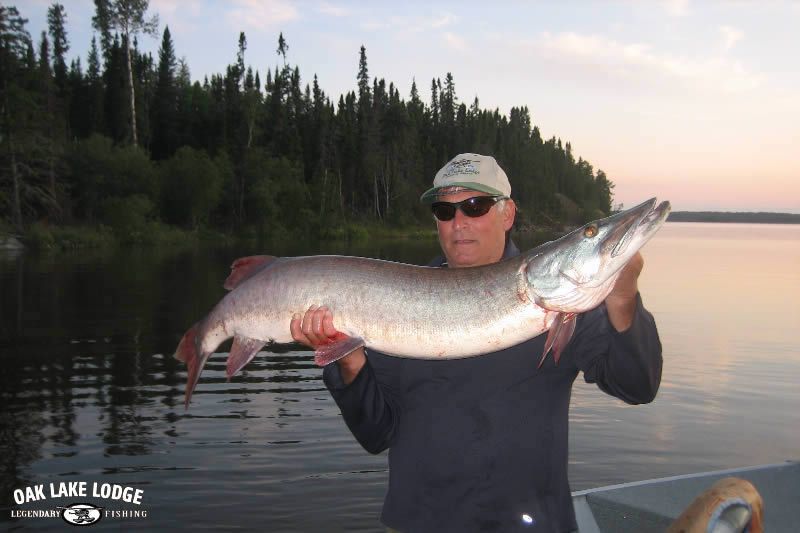
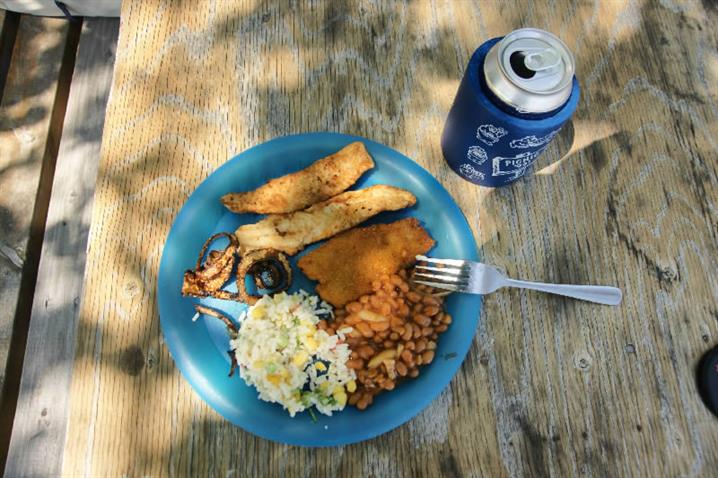
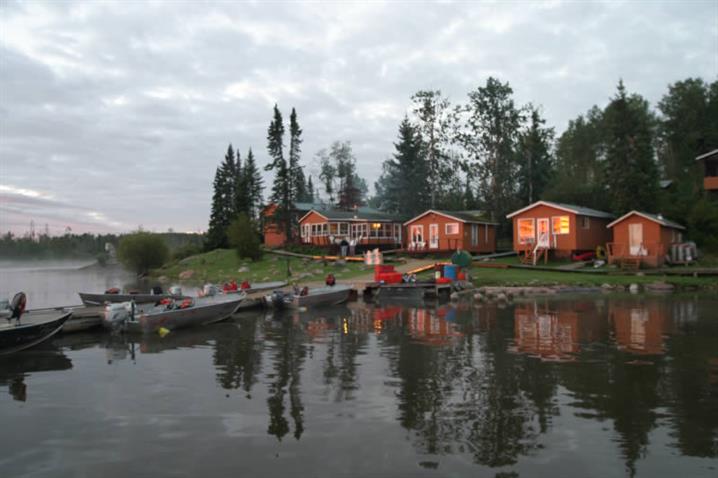
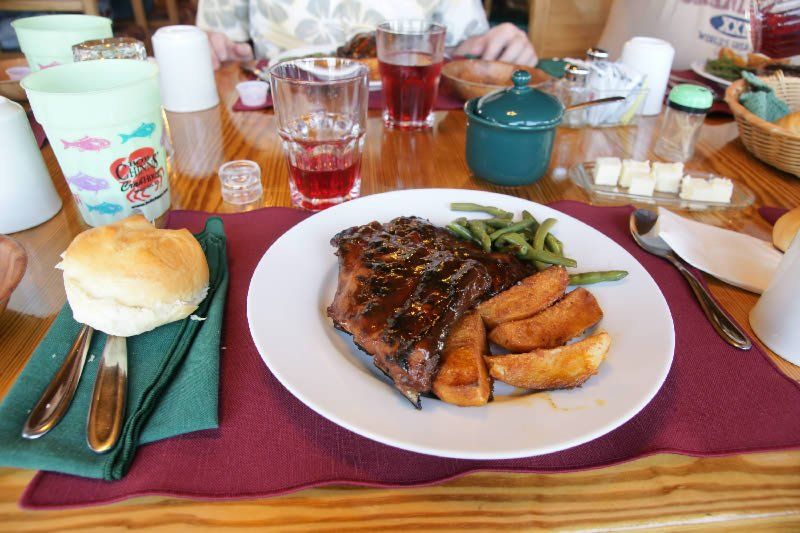
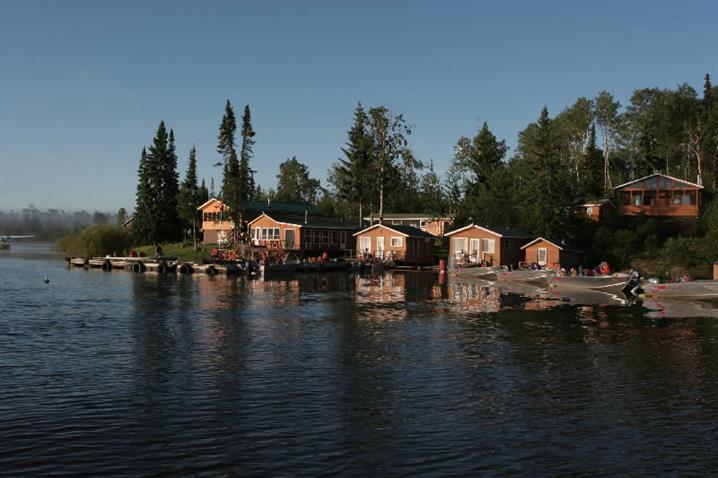
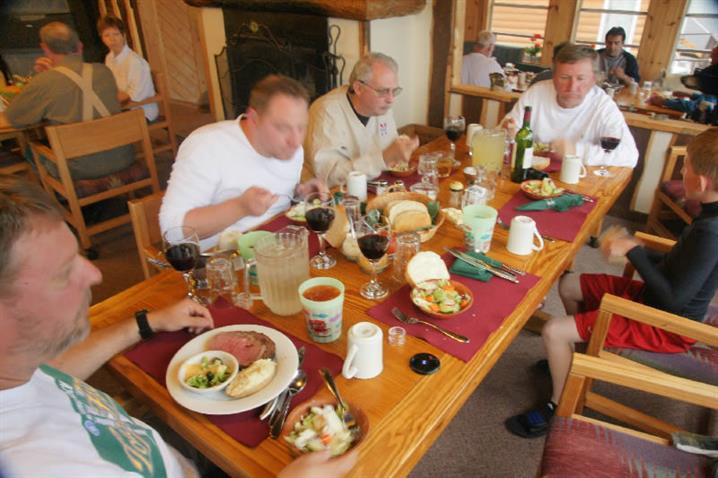
WE CAN’T WAIT TO SEE YOU AT OAK LAKE LODGE
Whether you’re ready to book your summer trip or just have some more questions, we are happy to help.
We are a fly-in fishing lodge located in the Canadian wilderness where you experience the best walleye fishing in Canada. We include your float plane flight from Vermilion Bay, Ontario, to our lodge as part of your fishing package.
Sign Up for our Newsletter
One email per month about fishing in Canada.
